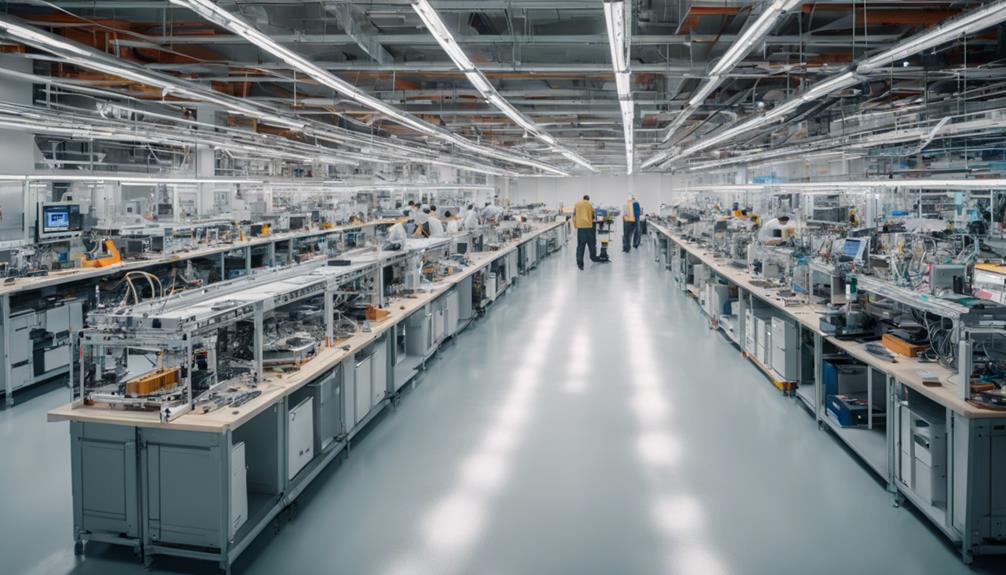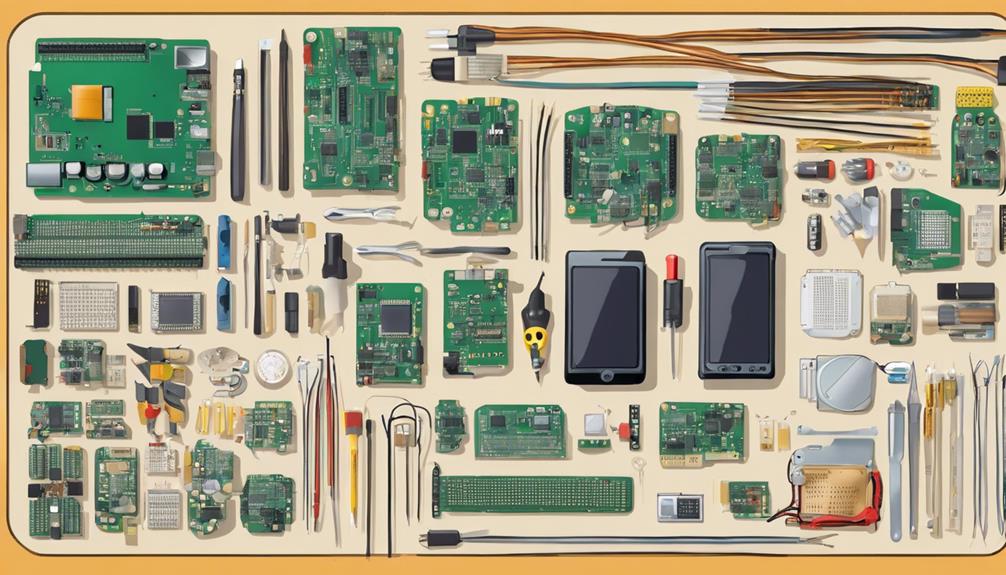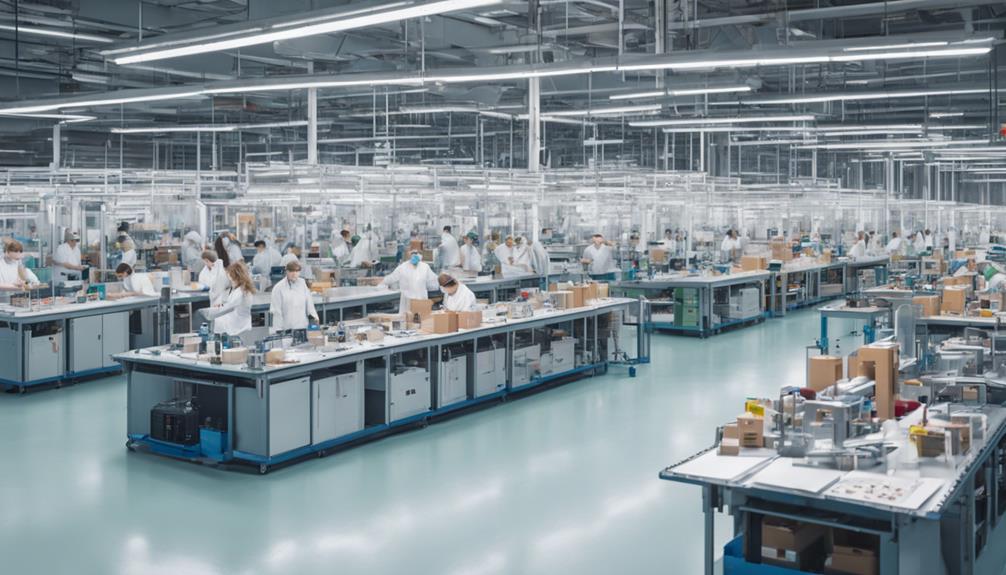The cost of PCB assembly line production varies widely, ranging from $5,000 to $600,000 or more per piece, depending on factors such as component count, complexity, board size, and manufacturing processes. Certification standards, equipment, and labor costs also impact production costs. To optimize production efficiency and reduce expenses, it is essential to understand the key determinants of cost. From design and layout considerations to material and technology choices, factors influencing total production cost must be carefully considered. As you explore the intricacies of PCB assembly line production, the nuances of cost estimation will become increasingly clear.
Key Takeaways
- PCB assembly line production cost ranges from $5000 to $600000 per piece, depending on factors like component cost and production volume.
- The common price for PCB production line sets falls between $6800 and $9800, with minimum order quantities starting at 1 set.
- Factors like certification standards, equipment used, and geographical location significantly impact the overall cost of PCB assembly line production.
- The cost of components, manufacturing processes, and production volumes are crucial factors to consider when estimating the total production cost.
- Accurate estimation of PCB assembly line production cost is essential for competitive pricing and profitability.
Calculating PCB Assembly Costs
Precise calculation of PCB assembly costs is essential, as it enables manufacturers to determine the profitability of their production lines and make informed decisions about resource allocation.
The cost of PCB assembly line production can range from $5000 to $600000 per piece, with the most common price for PCB production line sets falling between $6800 and $9800. Minimum order quantities typically start at 1 set for PCB assembly line production, allowing manufacturers to produce small batches or large quantities as needed.
Accurate calculation of PCB assembly costs involves considering the cost of components, manufacturing processes, and production volumes. Manufacturers must also factor in certification standards such as ISO9001:2000, which are common in the PCB assembly line production industry.
Factors Affecting Production Cost
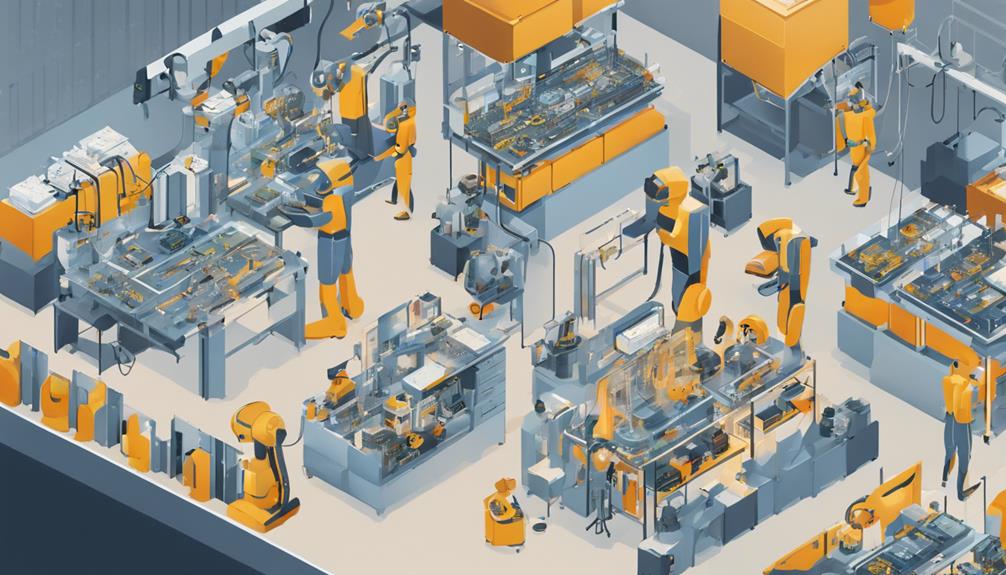
Influenced by a multitude of factors, the cost of PCB assembly line production can fluctuate considerably, making it essential to understand the key determinants that drive these costs.
The type of equipment used, for instance, has a significant impact on PCB assembly costs. Different equipment types, such as electrical etching machines and automatic loaders, have varying price points, affecting the overall production cost. Manufacturers like Shenzhen Eternal Technology and Beijing Golden Eagle offer a range of PCB production line options with distinct price tags, further influencing the cost.
Certification standards, like ISO9001:2000, also play an important role in determining the cost of PCB assembly line production. Compliance with these standards can increase production costs, but it also ensures high-quality products and enhances the manufacturer's reputation.
Additionally, suppliers like Zhejiang NeoDen Technology and Guangdong Moje Intelligent Equipment provide support and warranties for PCB production line equipment, which can impact the overall cost.
Understanding these factors that affect PCB assembly costs is crucial for manufacturers to optimize their production processes and minimize expenses. By recognizing the key factors influencing production cost, manufacturers can make informed decisions to improve their bottom line.
Labor Costs and Efficiency
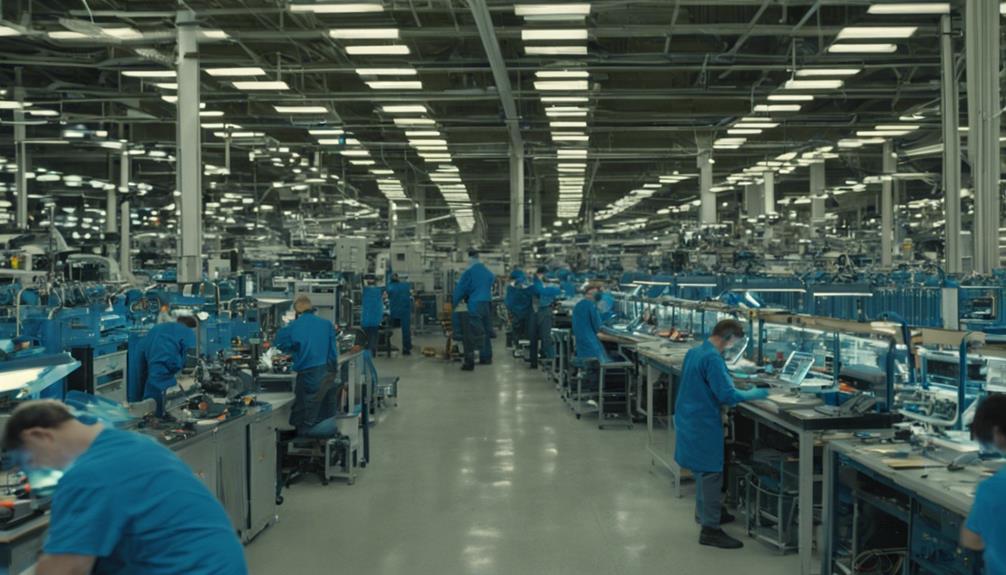
Labor costs are a substantial component of the overall production cost, heavily influenced by geographical location. Regions like South Asia offer relatively lower labor rates for PCB assembly line production, impacting the cost significantly.
This variation in labor costs can have a considerable impact on the overall cost of production. To optimize labor costs and improve production efficiency, several factors come into play. These include efficient labor practices and skilled workers, which enhance production line efficiency and reduce labor costs.
Automation technologies play a crucial role in decreasing labor costs and increasing production efficiency. Training programs for assembly line workers also contribute by enhancing skills and productivity, ultimately impacting labor costs. Geographical location is another key factor that significantly influences labor costs and overall production cost.
Component Count and Complexity
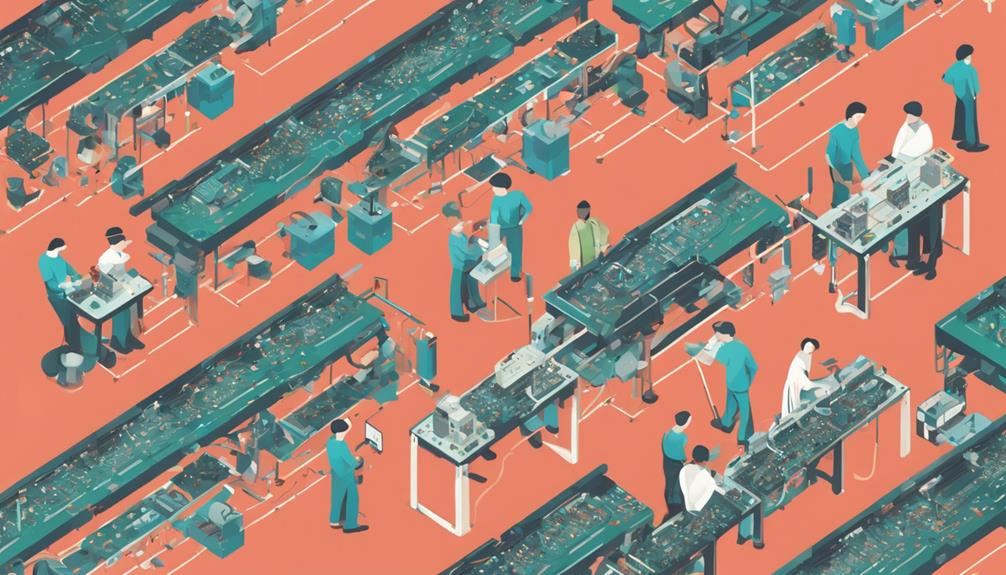
The intricate dance of components on a printed circuit board (PCB) design can greatly impact the cost of assembly line production. The sheer number of components and the complexity of their arrangement dictate the level of manufacturing sophistication required.
The component count and complexity of a PCB design are pivotal factors in determining the PCB assembly cost. Higher component counts and increased design complexity can lead to higher production costs for PCB assembly lines. Complex PCB designs with multiple components require more intricate assembly processes, impacting production line costs.
Manufacturers may charge higher prices for PCB assembly line production based on the number of components and the complexity of the design. Understanding the component count and complexity of a PCB design is essential for estimating the cost of PCB assembly line production accurately.
Board Size and Layer Impact
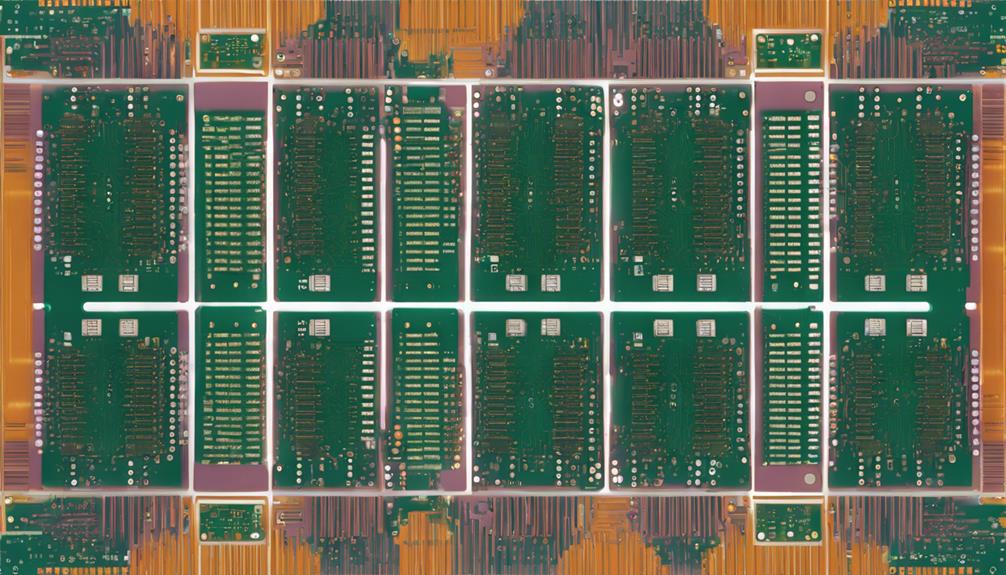
Board size and layer count emerge as critical factors in PCB assembly line production. Larger boards and higher layer counts necessitate increased material usage and complexity, ultimately driving up production costs. This is because larger boards require more materials, and higher layer counts demand more intricate manufacturing processes, resulting in higher PCB assembly costs.
Some key implications of board size and layer count on production costs include:
- Larger boards require more materials, increasing the cost of production
- Higher layer counts necessitate specialized equipment and processes, adding to the overall cost
- Manufacturers may charge premium rates for larger boards and higher layer counts due to the increased complexity and material requirements
- Understanding the impact of board size and layer count is vital for accurate budgeting and cost estimation in PCB assembly line production
Soldering Process and Testing
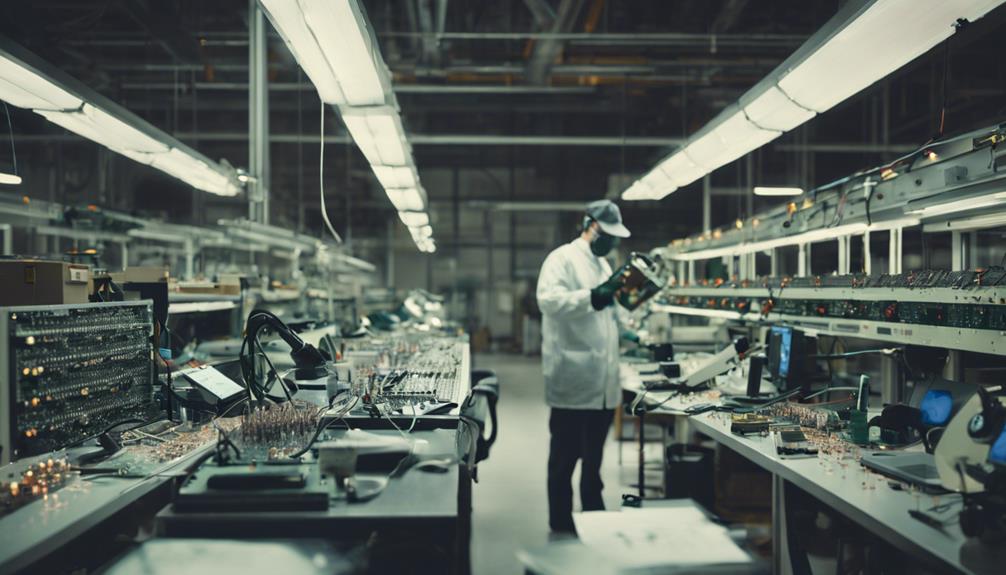
In the PCB assembly process, the soldering technique employed plays a crucial role in production costs and efficiency. The choice of soldering method, whether wave, reflow, selective, or manual, has a direct impact on the assembly line's productivity and ultimately, the final product's quality.
Moreover, the implementation of automated testing methods, such as In-Circuit Testing and Automated Optical Inspection, guarantees the detection of defects and faults, thereby minimizing the need for costly rework and repair.
Soldering Techniques Used
Using essential soldering techniques is crucial in PCB assembly line production, as it directly impacts the reliability and quality of the final product. The choice of soldering technique depends on the specific requirements of the PCB design and the components used.
Some common soldering techniques used in PCB assembly line production include:
- Reflow soldering: used for surface-mount devices (SMDs) and is a popular method due to its efficiency and cost-effectiveness.
- Wave soldering: used for through-hole components and is ideal for high-volume production.
- Selective soldering: a hybrid approach that combines the benefits of reflow and wave soldering.
- Hand soldering: used for small-batch or prototype production, or for components that require special handling.
Proper soldering techniques ensure reliable connections between components on the PCB assembly line.
Efficient soldering processes and rigorous testing contribute to the overall cost of PCB assembly line production.
Following soldering, testing processes such as ICT, flying probe testing, AOI, and X-ray inspection are essential to identify any defects or issues in the soldering process, maintaining high product quality.
Automated Testing Methods
Implementing automated testing methods in PCB assembly line production guarantees that the soldering process and subsequent testing protocols are executed with precision and accuracy, thereby securing the reliability and performance of the final product.
Automated testing methods encompass various soldering processes, including selective, manual, wave, or reflow soldering, to confirm proper component connections. Additionally, testing methods such as In-Circuit Testing (ICT), flying probe testing, Automated Optical Inspection (AOI), and X-ray inspection are essential for verifying product quality.
These testing methods help identify defects, faults, or errors in the PCB assembly process, ensuring high-quality, reliable end products. By leveraging automated testing, manufacturers can guarantee that each PCB board meets the required standards and specifications for functionality and performance.
This approach enables the detection of defects early in the production cycle, reducing the likelihood of costly rework or even product recalls. By integrating automated testing methods into their production workflow, manufacturers can optimize product quality, increase efficiency, and reduce costs.
Location-Based Cost Variations
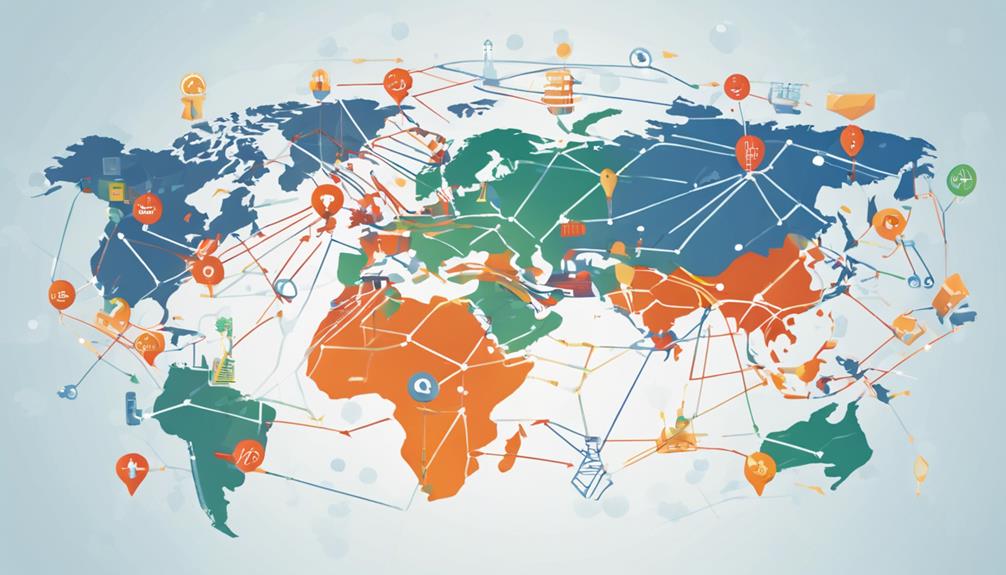
Labor costs for PCB assembly line production can fluctuate greatly depending on the geographical location of the manufacturing facility. Regional differences in labor expenses, facility overhead, and local economic conditions contribute to the disparity. When planning production, it is essential to take into account these geographical factors to accurately estimate the overall cost of PCB assembly line production.
Regional differences in labor costs and overhead expenses greatly impact the total production cost of PCB assembly lines. For instance:
- Regions like South Asia may offer lower labor costs compared to North America or Europe for PCB assembly line production.
- Facility expenses, such as rent and utilities, vary greatly depending on the location of the manufacturing facility.
- Overhead expenses, including management and administrative costs, differ significantly between regions.
- Local economic conditions, such as taxes and trade policies, also influence the overall cost of production.
Understanding these location-based cost variations is vital for estimating the overall cost of PCB assembly line production accurately.
Design and Layout Considerations
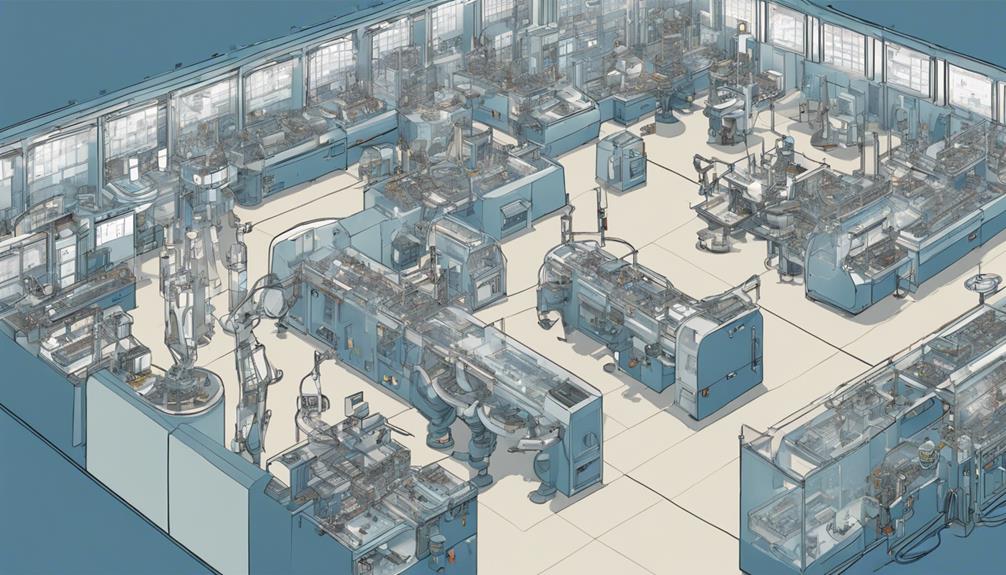
The design and layout of a PCB assembly line production process have a profound impact on the overall efficiency and cost-effectiveness of the operation, as they can either streamline or hinder the assembly process. A well-designed PCB layout can greatly reduce PCB assembly costs by minimizing production time and maximizing production line utilization. Conversely, a poorly designed layout can lead to increased production time, reduced yields, and higher costs.
Efficient design and layout considerations are vital in optimizing the assembly process. Proper component placement and routing can streamline the assembly process, reducing errors and rework. Implementing Design for manufacturability (DFM) practices can further cut down on errors and rework, saving time and money in production.
Material and Technology Choices
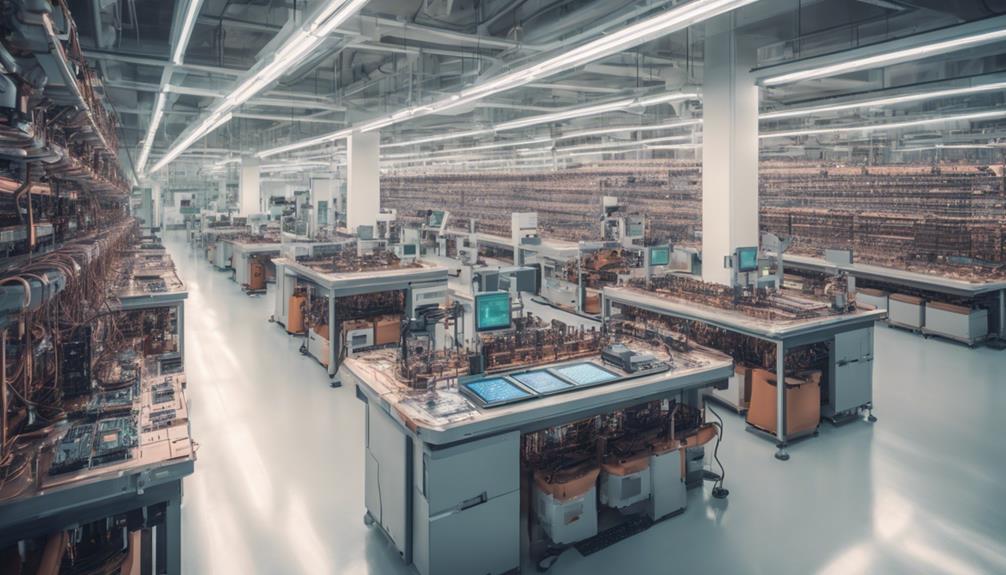
Material selection and technology adoption play an essential role in determining the cost of PCB assembly line production. They greatly influence production efficiency, product quality, and overall expenditure. The materials used in PCB assembly, such as FR-4, can have a notable impact on the cost of production. Additionally, the adoption of advanced technologies, such as automated SMT machines, can increase the initial investment costs but provide high efficiency in the long run.
Some key factors to take into account when making material and technology choices include:
- The cost of materials used, such as copper, gold, and silver, which can vary depending on market prices
- The cost of SMT components, which can be reduced by selecting cost-effective suppliers
- The level of precision and speed required, which can influence the choice of production line equipment
- The warranty duration and after-sales support provided by suppliers, which can affect the overall cost of production line equipment
Reducing PCB Assembly Expenses
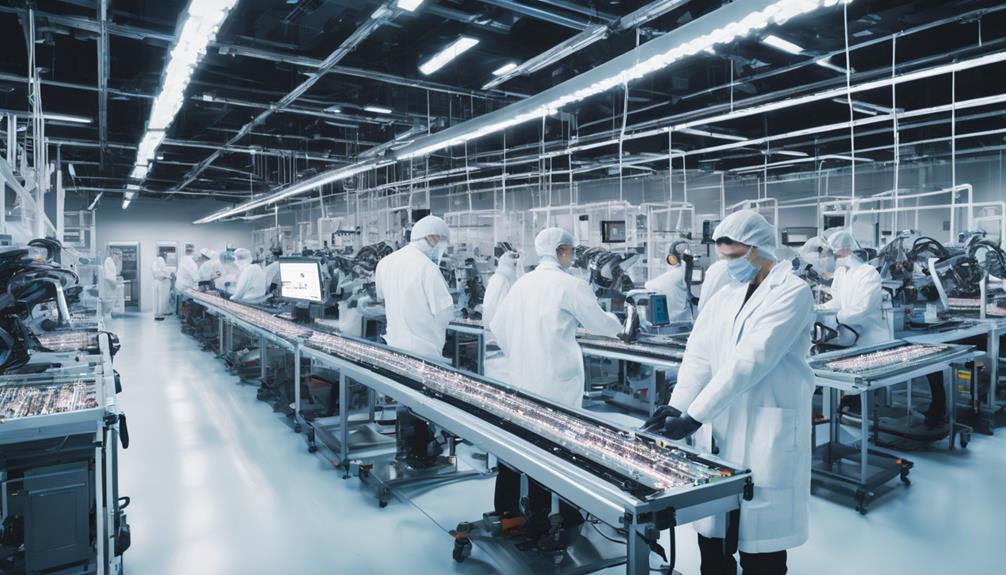
Efficient production processes and strategic cost-saving measures can greatly reduce expenses in PCB assembly line production. By streamlining workflow and optimizing resource allocation, manufacturers can reduce PCB assembly costs.
Additionally, negotiating bulk purchasing agreements for components can lower overall assembly expenses. Investing in automation technology, such as surface mount technology (SMT), can improve efficiency and reduce labor costs in PCB assembly line production.
Regularly reviewing and updating production practices can help identify areas for cost reduction. Factors affecting PCB assembly costs, such as material and labor costs, can be mitigated by implementing cost-effective production processes.
Implementing efficient production processes can reduce the cost of PCB assembly line production, making it more competitive in the market. By leveraging automation technology and strategic cost-saving measures, manufacturers can reduce PCB assembly costs and improve profitability.
What is the Relationship Between PCB Fabrication Process and Assembly Line Production Costs?
The typical PCB fabrication process plays a crucial role in determining assembly line production costs. The efficiency and precision of the fabrication process directly impact the time and resources required for assembly. Streamlining the fabrication process can result in cost savings and improved overall production efficiency.
Estimating Total Production Cost
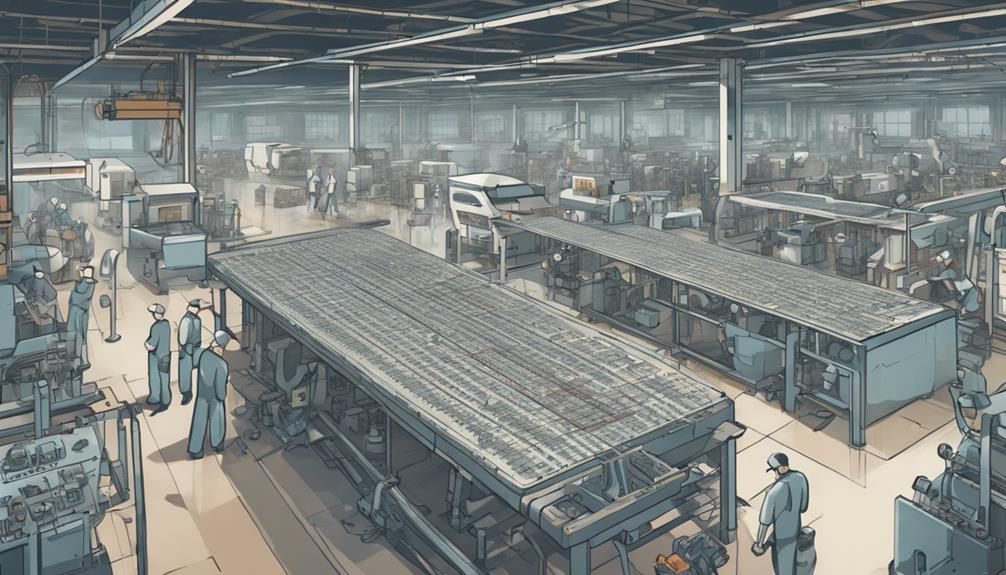
Accurate estimation of total production cost is essential in PCB assembly line production, as it enables manufacturers to set competitive pricing strategies and maintain profitability. To estimate total production cost, manufacturers must consider various factors, including the average price of PCB, cost of PCB assembly, and PCB manufacturing cost.
Here are some key considerations for estimating total production cost:
- Cost per square inch: The cost of PCB assembly varies based on the size of the PCB, with larger boards typically costing more.
- Cost per piece: The cost of PCB assembly also depends on the quantity of PCBs being produced, with higher quantities often resulting in lower costs per piece.
- SMT chip costs: The cost of SMT chips, a critical component of PCB assembly, can vary depending on the type and quality of the chip.
- Equipment and labor costs: The cost of PCB assembly line equipment, as well as labor costs, must also be factored into the total production cost.
Frequently Asked Questions
How Much Does It Cost to Make Pcb?
The cost of making a PCB (Printed Circuit Board) assembly can vary greatly, depending on factors such as production volume, complexity, and equipment requirements.
On average, the cost of PCB production line equipment sets falls between $6,800 to $9,800.
However, the cost per piece can range from $5,000 to $600,000, with minimum order quantities typically starting at 1 set.
Why Is PCB Assembly so Expensive?
Surprisingly, 70% of PCB assembly costs are attributed to component procurement. PCB assembly is expensive due to the intricate interplay of factors.
The complexity of design, high-performance components, and precise soldering processes drive up costs. Additionally, the demand for skilled labor, automation, and quality control measures also contribute to the expense.
Ultimately, the pursuit of high-reliability products with peak performance necessitates these expenditures, resulting in a premium price tag for PCB assembly.
What Is the Margin for PCB Manufacturing?
The margin for PCB manufacturing typically ranges from 5% to 15%. This fluctuation is attributed to factors such as production volume, complexity, and competition.
Efficient operations, cost-effective sourcing, and a profound understanding of cost structures are essential for maximizing margins.
How Much Does a SMT Line Cost?
The coveted SMT line is a behemoth of precision and efficiency. But at what cost? The answer lies in a spectrum of prices, ranging from $5,000 to a staggering $600,000 per piece.
For a more modest setup, a common price range of $6,800 to $9,800 per set can be expected.
The question remains, is the investment worth the reward?
